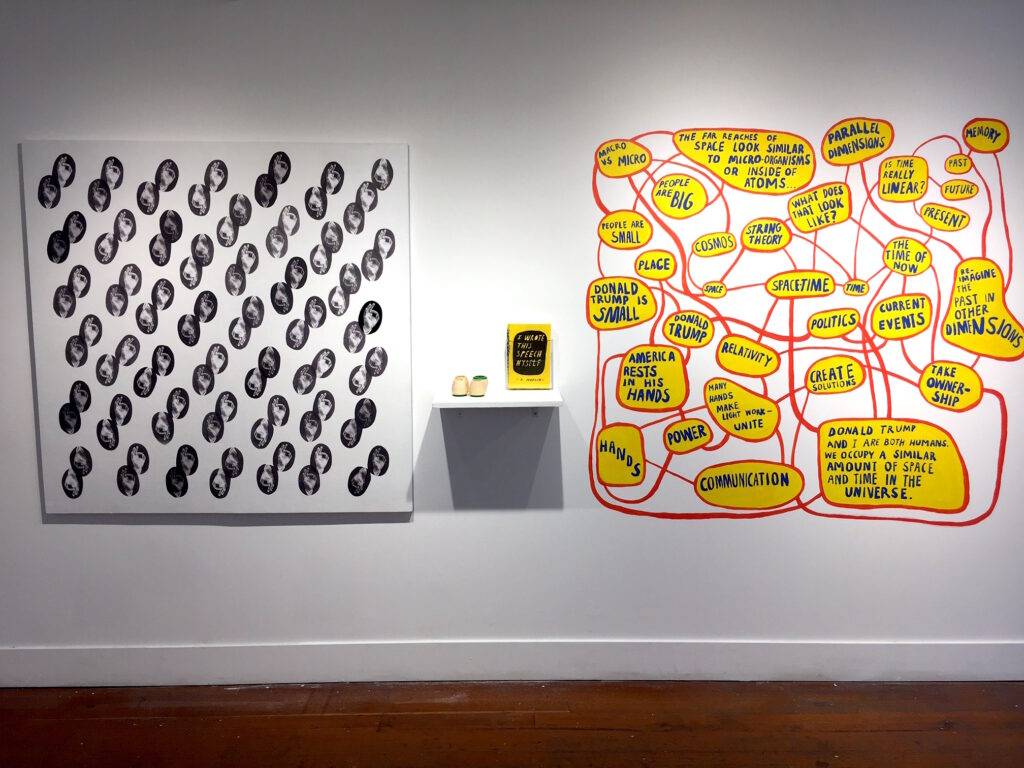
While a Studio Artist at Root Division, Leigh Ann Coleman has developed a new, responsive body of work to the current political climate. Approaching her art making from the perspective of a scientist, Coleman’s installation reimagines the space and time we occupy, as a way of coping, connecting, understanding, and taking ownership of the present moment.
During our studio visit, Coleman and I discussed her approach to the creative process through the lens of the scientific method, the feeling of being both big and small in our own world, and the need to insert a sense of control when the world feels continuously unsteady.
For my first official month curating the Frank-Ratyche Project Space, Coleman has installed a hand-painted diagram of networks connecting various concepts from “String Theory” to “parallel dimensions” to “humans are small”- emphasizing the push-pull relationship between our experience of both macro and micro levels. Ultimately, Coleman’s work calls for participation and encourages viewers to analyze the possibility of new connections to make their own hypotheses and conclusions.
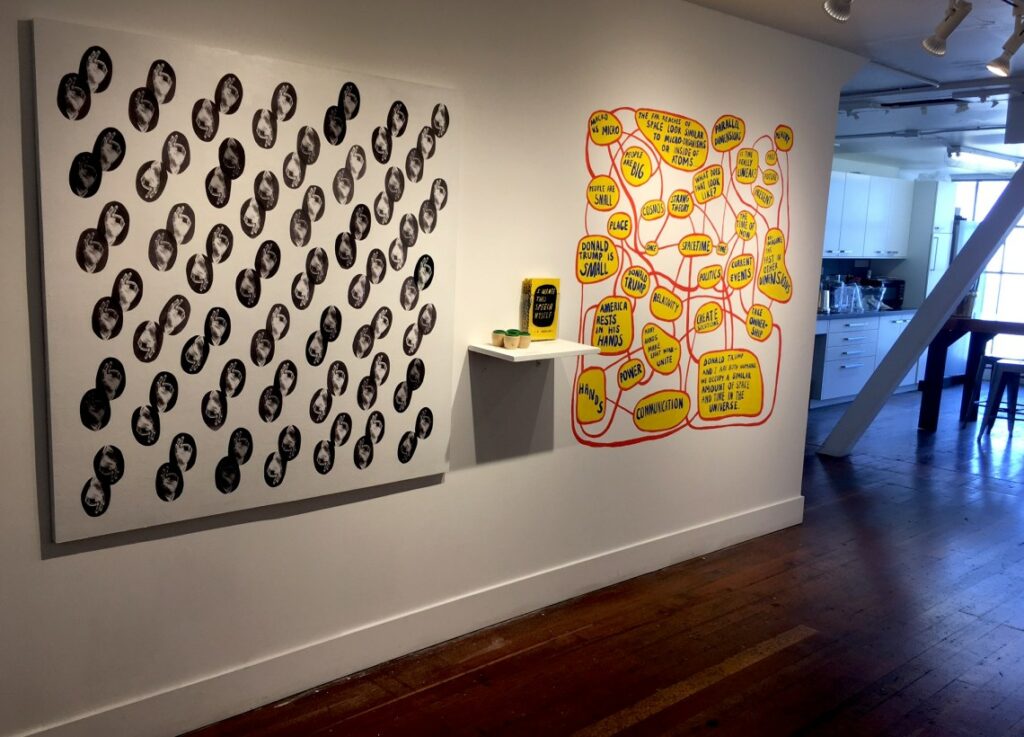
SR: When I was first started to learn about your work, I was fascinated by your interest in science, specifically theories of dimensions as it relates to time and space. Can you talk more about your interest in approaching your art practice from the lens of a researcher, programmer, or physicist?
LC: Science has always interested me. I have always been activated by visual learning, so it was a challenge for me in classes such as chemistry to visualize how equations connect to what was actually physically happening.
But after actually performing an experiment, paired with an equation, a light bulb would go off in my head. Using experiments as a way to visually process information became instrumental for me.
SR: I would argue that many people see these two modes of working as if they are in opposition, but in reality, there are many similarities in the creative and scientific approach.
LC: The scientific method is so similar to the process of art making. With the scientific method, you first ask a question, then do research, construct a hypothesis, create a test experiment and determine if the process is working. If yes, you analyze the data and draw conclusions.
Artists have a nearly identical process, asking questions and responding to the world, and using their medium as a tool and means of investigation. Each art piece is a mini experiment.
SR: Are these types of processes connected for you?
LC: Definitely. What I love most about the connection between science and art is that there are no definite answers. Nothing is concrete.
Science is always changing. We are always learning more to expand on older theories, or to discover that things are not what we thought for hundreds of years. Art is so similar to this. With each work of art, there are no definite answers. In fact, sometimes art only asks very good questions.
SR: A key theme that threads throughout your work is the connection between the macro and micro – understanding that we are simultaneously part of something infinite, but that we are also singular beings. When did you first start to conceptualize this push-pull relationship?
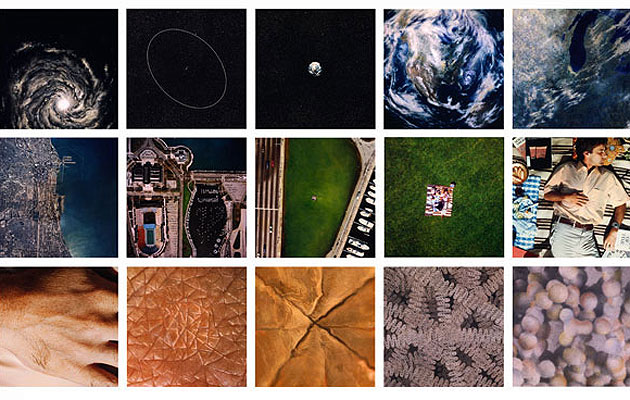
LC: I think the connection between macro and micro clicked for me after I first watched the film, Powers of Ten, which was created by designers, Charles and Ray Eames.
The film starts with two people having a picnic in a 10 x 10-meter frame. It then zooms out slowly by the power of 10 each time – first leaving the city, state, country, world, solar system, and Milky Way. The frame ultimately goes well beyond the Virgo cluster, where the Milky Way becomes so small it no longer can really be seen.
It then goes back zooming in. The shot reaches the hand of the man on the picnic blanket, then the blood vessels, blood cells, capillaries, to the nucleus, to the DNA, to a hydrogen atom, to the outer electrons, then inner electrons, then the carbon nucleus, and then finally a single proton.
What fascinated me the most about this film, and the ongoing relationship between micro and macro, is that the outermost reaches of space, are so visually and structurally similar to the innermost reaches of biology. That is a beautiful thing.
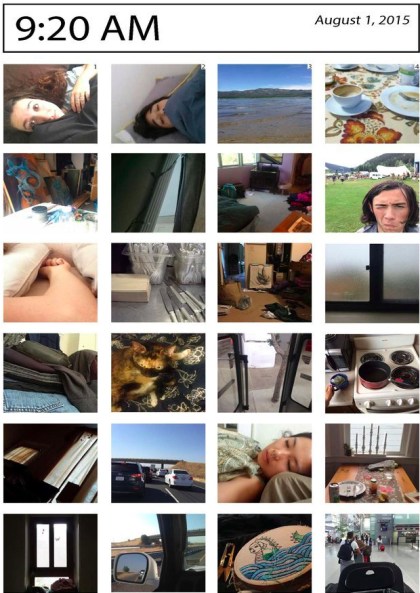
SR: In your previous work, Time/Space Project, you experimented with understanding how and when people exist in current space. How did you activate this concept?
LC: The Time/Space Project is a recent participatory project that has taken on different iterations. I document people all over the world in my “network of people”, and asked that they set alarms for the same exact time to take a picture at the same exact moment, and record their location.
The performative aspects of this project took place on August 1, 2015. The goal was to help not only myself, but others, realize how small they truly are, while also expanding awareness of other lives.
There are moments when it can feel as if I am the only person I am aware of in the world. But in reality, there are millions of people on this same planet, having equally special moments, figuring out their own problems, listening to music, eating, loving, etc. This project was a direct way for me to put things into perspective.
SR: Your recent body of work continues to address this phenomenon of being present in both space and time, a theme you allude to in your current installation in the Frank-Ratchye Project Space. What is space-time? Is it a new dimension….? Can we access it?
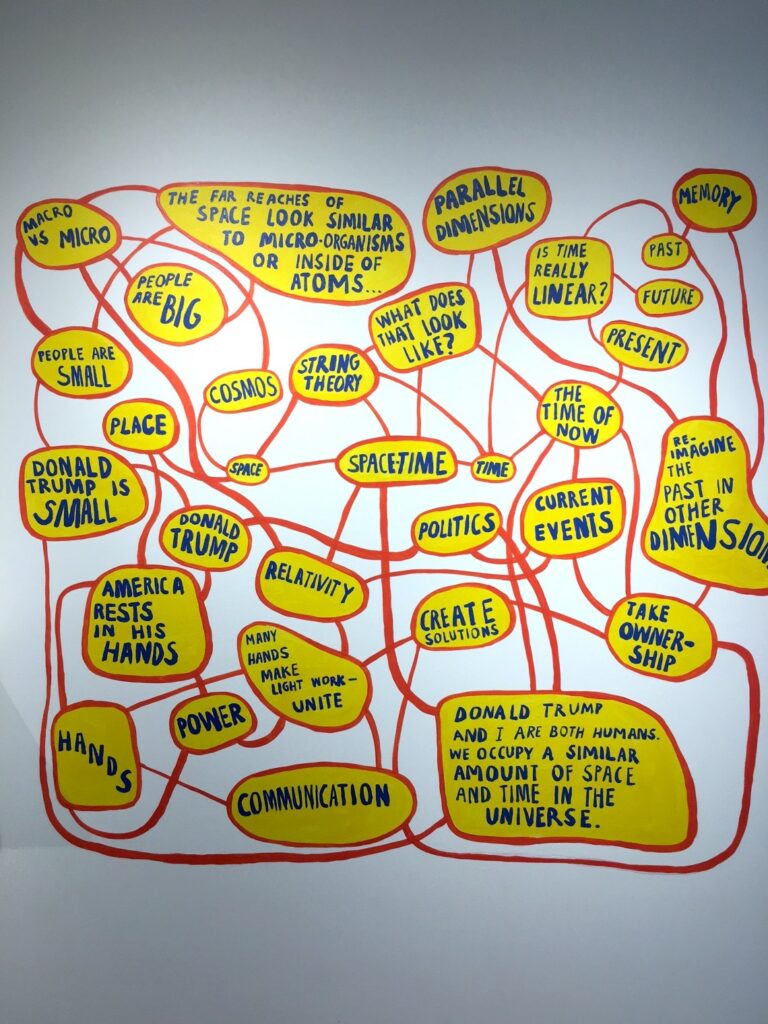
LC: In physics, space-time is a concept that recognizes the union of space and time. In this theory, space and time are a part of each other, which I know sounds pretty crazy! This idea was hypothesized by Albert Einstein.
Einstein’s “Theory of Relativity” describes space and time as a smooth fabric that can be distorted or bent by massive objects. If two people hold out a blanket between them and place a heavy softball in the center of the blanket, the blanket will bend around the shape of the ball. This blanket is referred to as the fabric of space-time, and the baseball would be like a planet or an object in space.
To the extent of my understanding, we can’t fully access or comprehend dimensions beyond our three dimensions. There are a lot of opinions on what further dimensions might be and the possibility of other dimensions that parallel our own that are beyond our reach.
For me, this is the fun part of bringing the concept of other dimensions into my art making. I love trying to understand what other dimensions might look like physically – because it is seemingly impossible to do in our dimension.
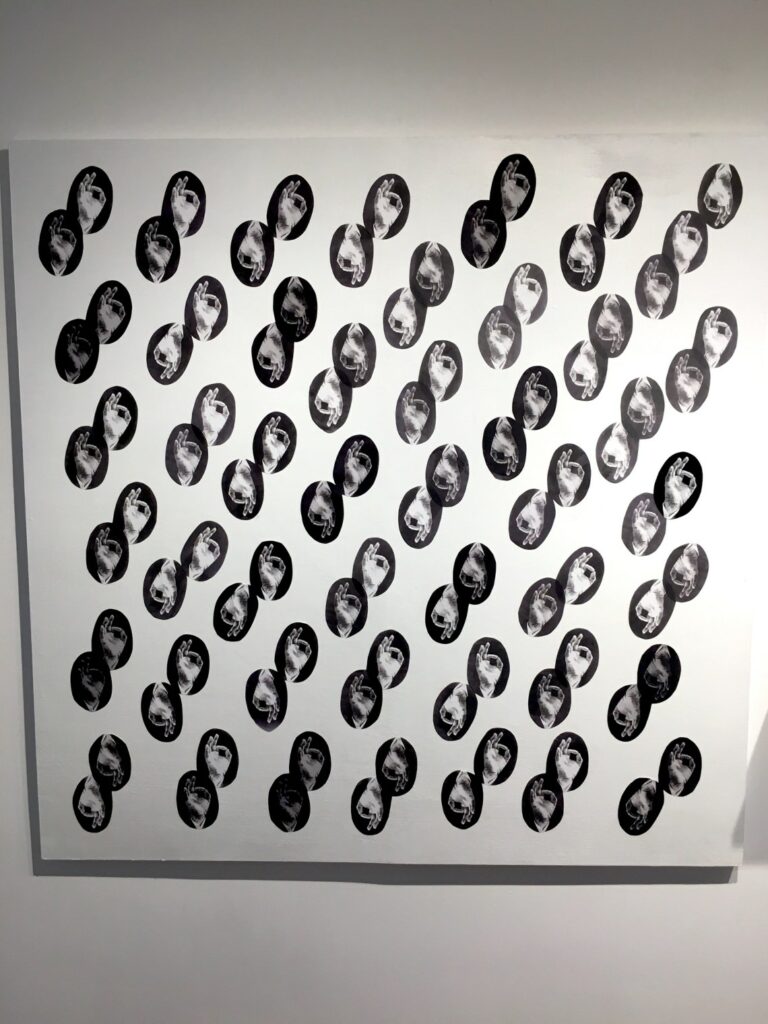
SR: Your recent body of work is in direct response to Trump’s inauguration in which you write his name for every hour of his presidency. Has this served as meditative or rejuvenated process? Both? Neither?
LC: After the election in November, it felt like there was this surge of resistance, that I really resonated with. I wanted to find a way to remind myself that he is president, and this is not normal (in my opinion).
Writing his name is my way attempt to keep up with him. With each Trump that I write for each hour of his presidency, I imagine what he might be doing, what he might be thinking, how he might be feeling. Then the next day I see it in the news. I choose to keep track of him on an hourly basis, because I feel affected by his decisions on an hourly basis. It is important for me to find ways to gain a sense of control over the situation.
SR: One of the pieces you are including in this exhibition is a participatory mad-lib zine that invites participants to fill in the nouns and adjectives from Trump’s inauguration speech. There’s a level of humor, but it also makes participants hyper-aware of the speech’s language.
What was your intention in creating the mad-lib and why in zine format?

LC: I love mad libs. When I read the Inaugural Address transcript, I immediately wanted to turn it into a mad lib. There was so much repetition in the speech with very simple sentence structure – a lot of “compare and contrast” and listing nouns with simple adjectives. I thought it would be a great idea for invite others to write their own political mad libs as a method of regaining a sense of power over the political climate.
It is so satisfying having a sense of control over the situation, even if it’s an illusion.It gives me the energy to continue to fight on and resist.

SR: When viewers encounter this life-sized diagram of words and phrases that combine the concepts from “String Theory” to “The Time of Now” to “People Are Big”. What are you hoping are their potential takeaways? Is it a call to action?
LC: For the diagram piece, I am hoping that people are inspired to make their own brainstorm connections with the world around them – maybe create their own hypothesis and experiments.
I think everything is connected and not always in obvious ways, like the connections between art, politics, time, and space. The connections seem so much more clear when you plug them all in together.
My goal for this piece is for it to serve as a reminder to myself and others that we are all so small, smaller than specks in the cosmos, and so big at the same time, with mini universes inside of us.
